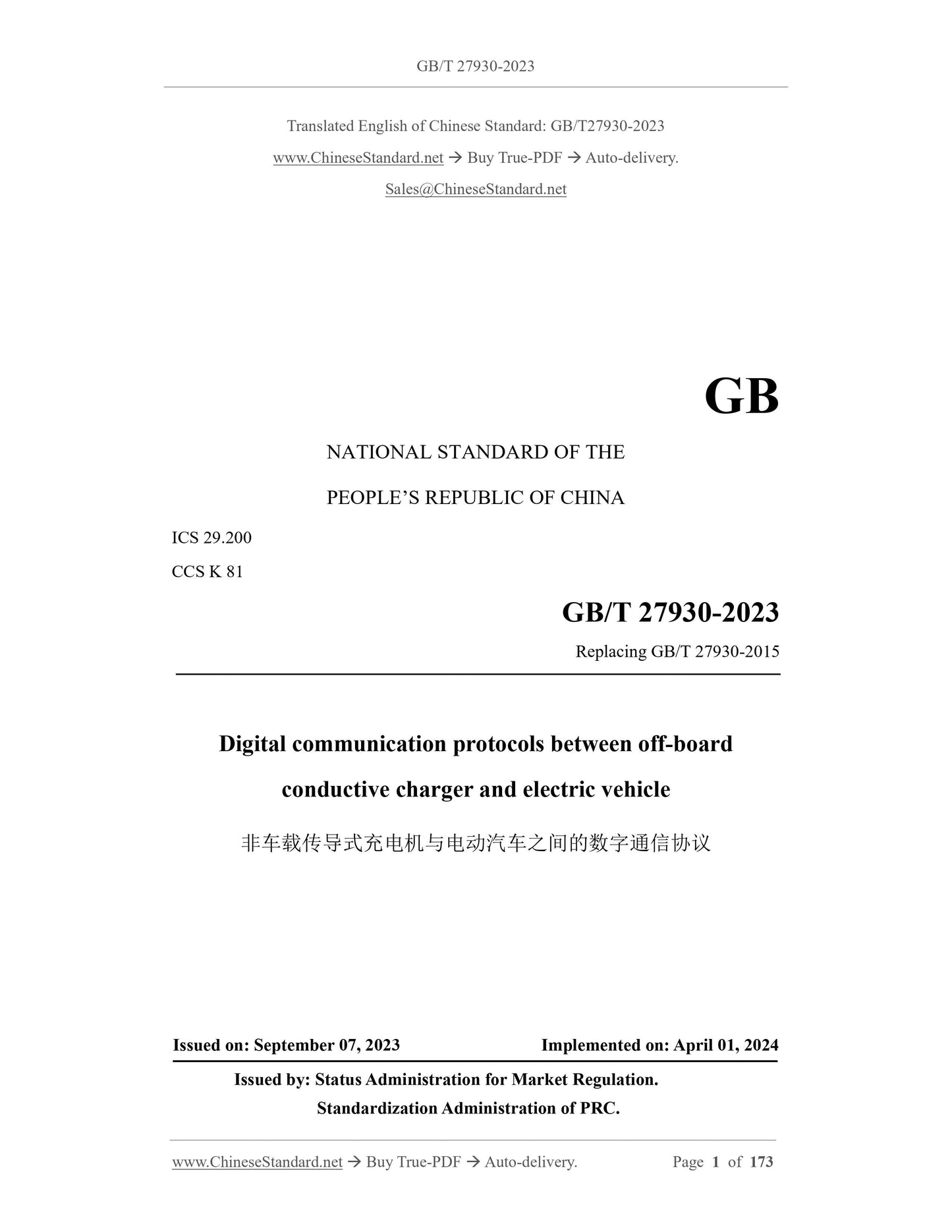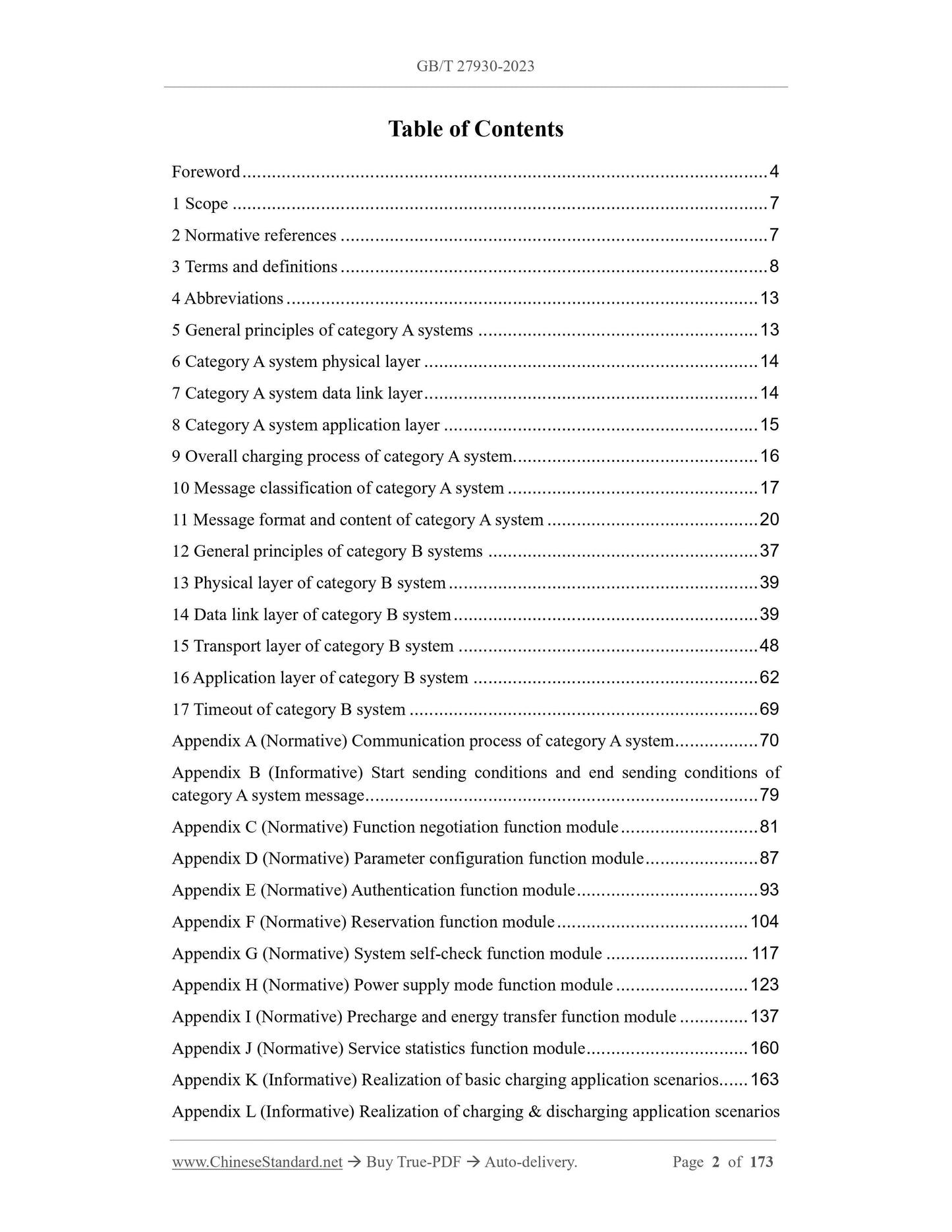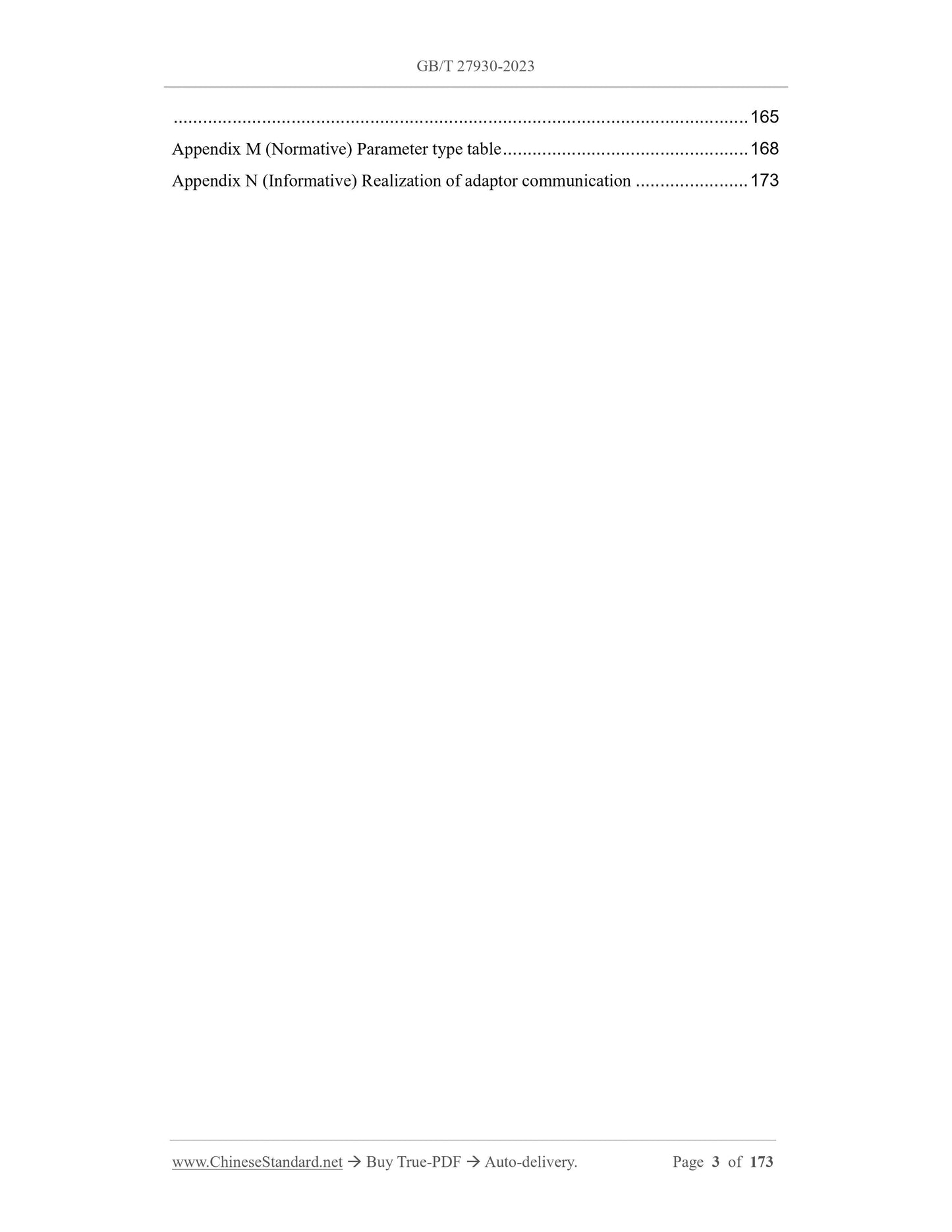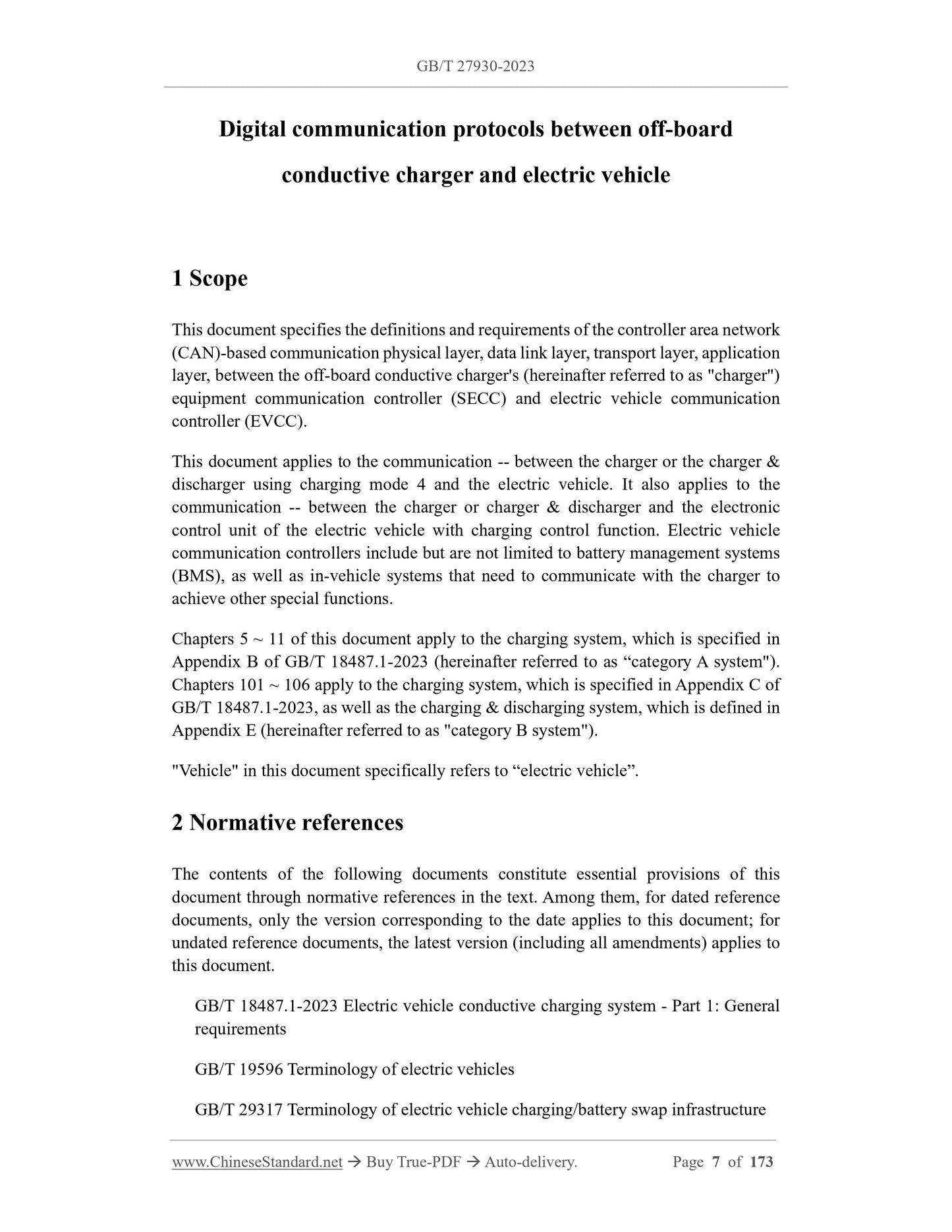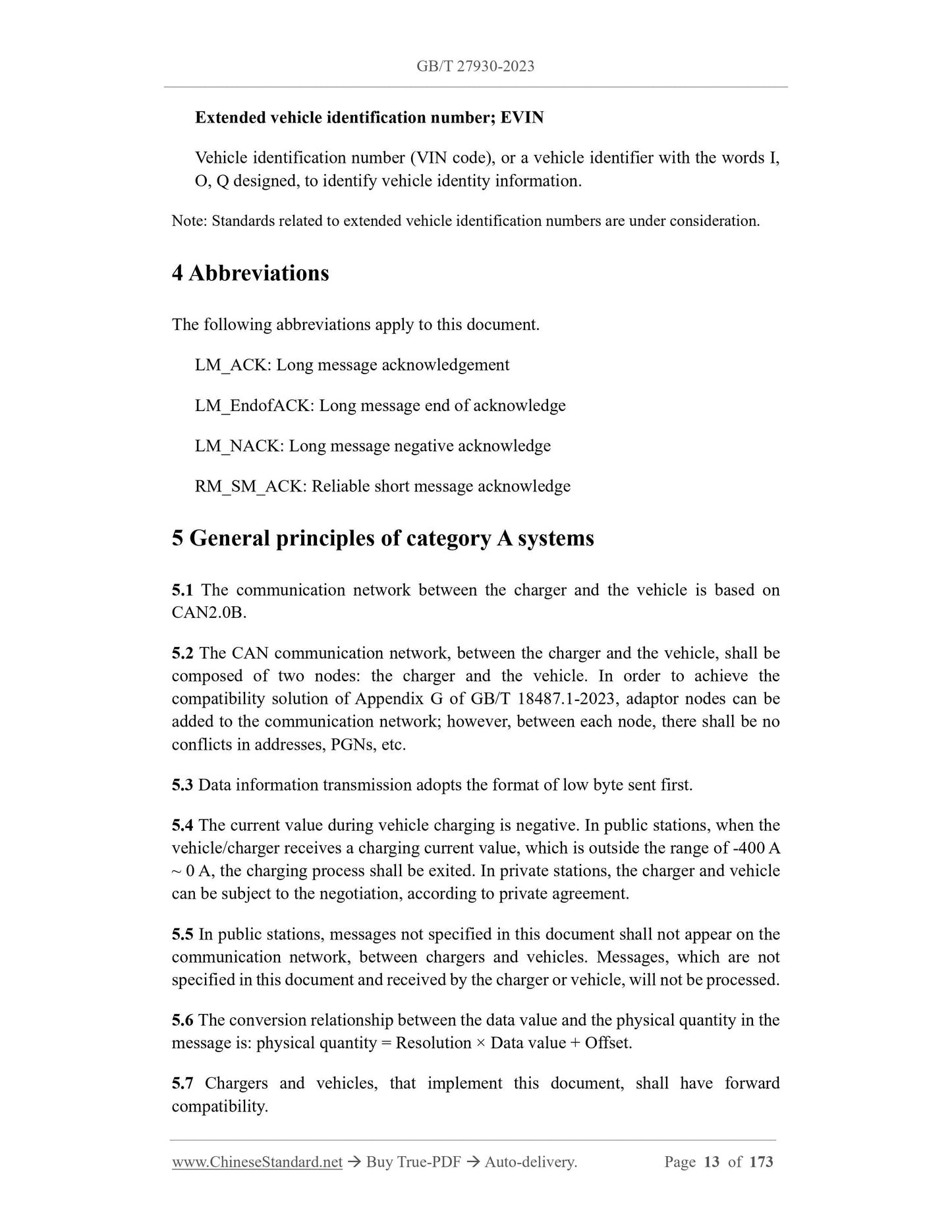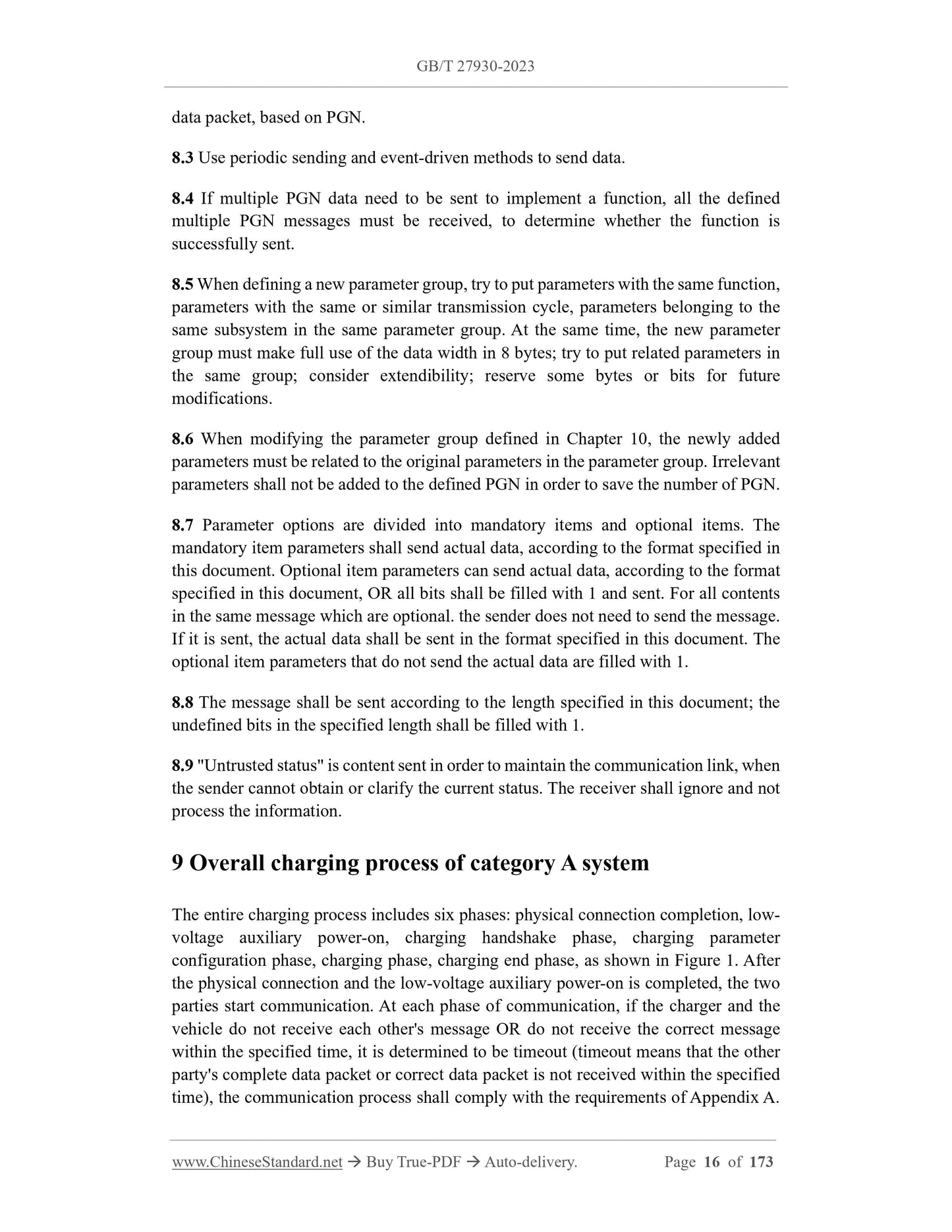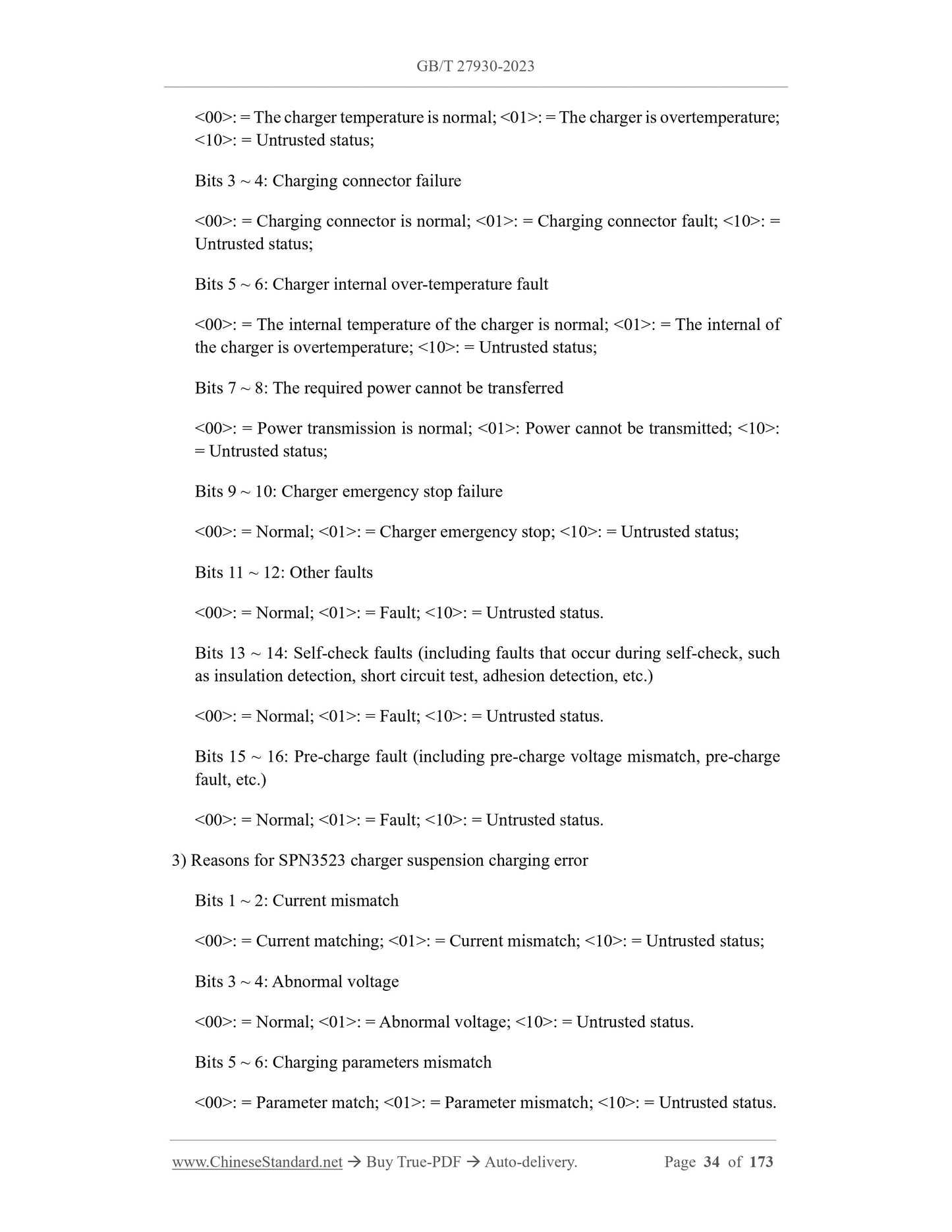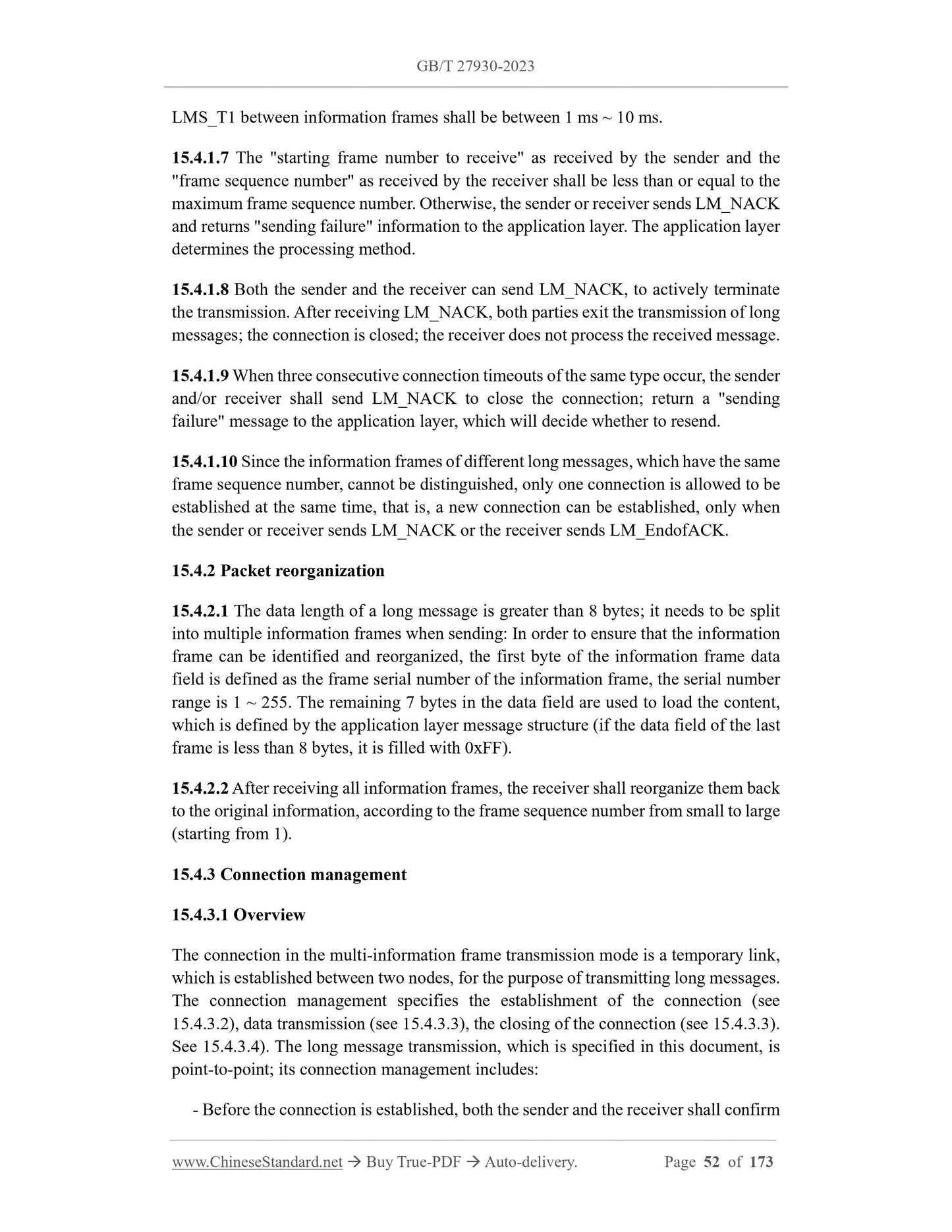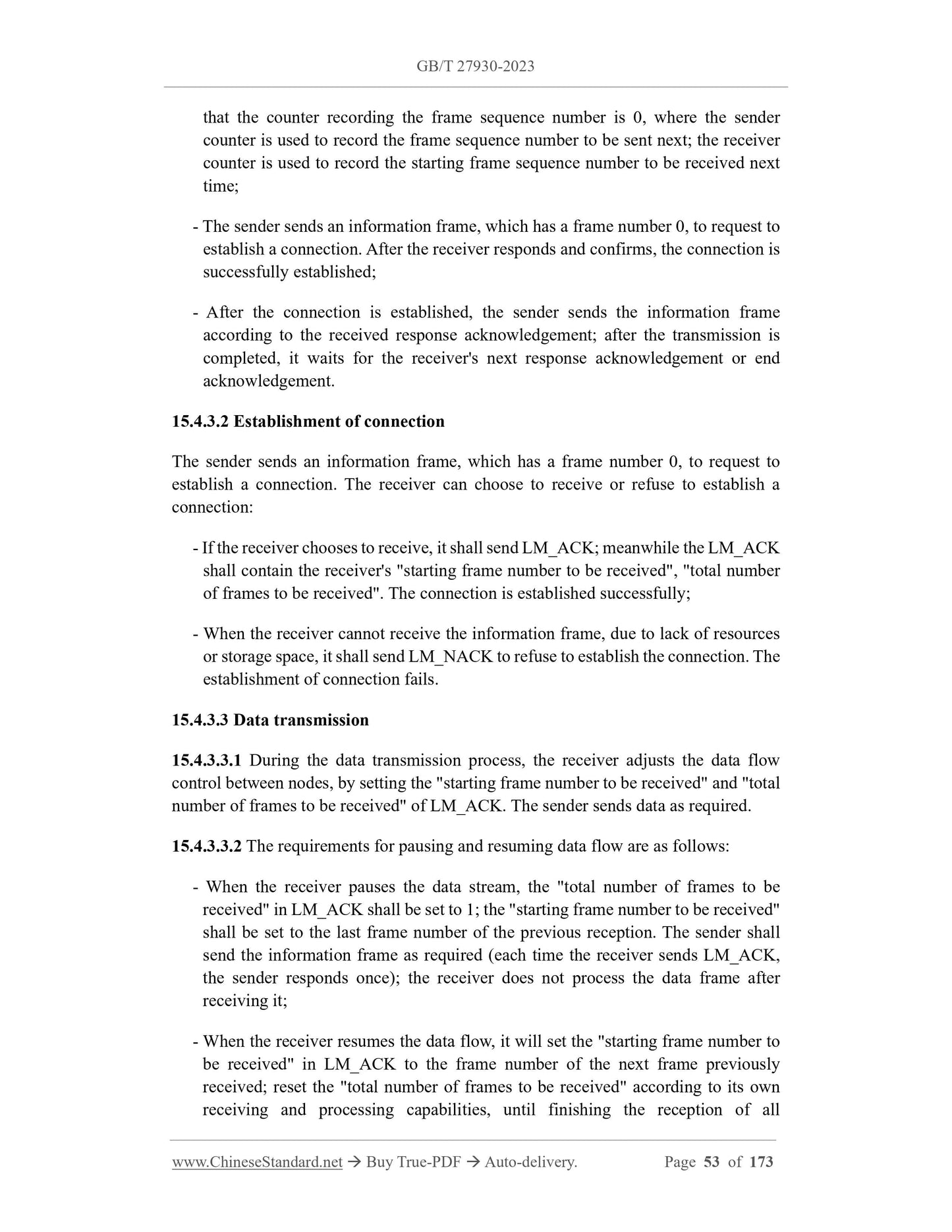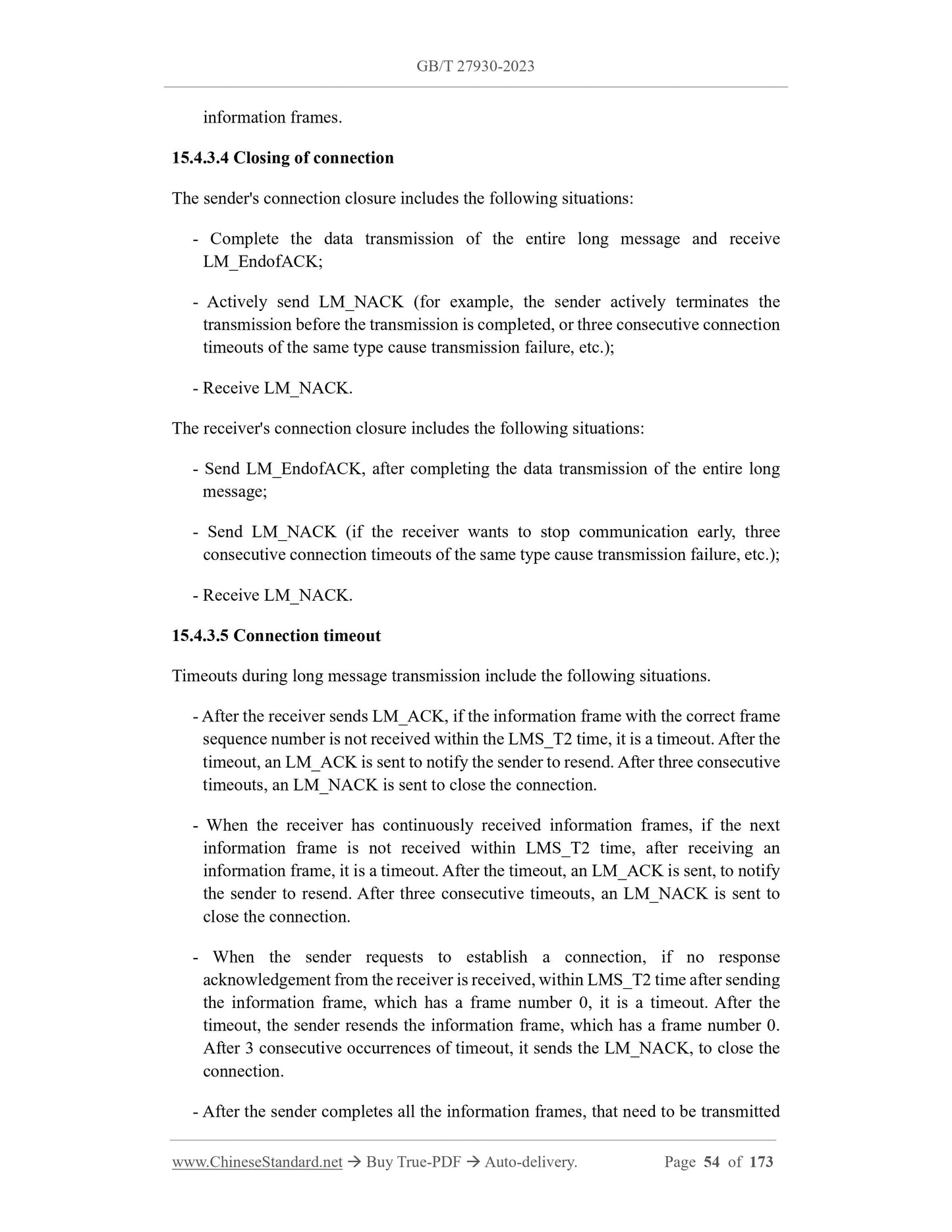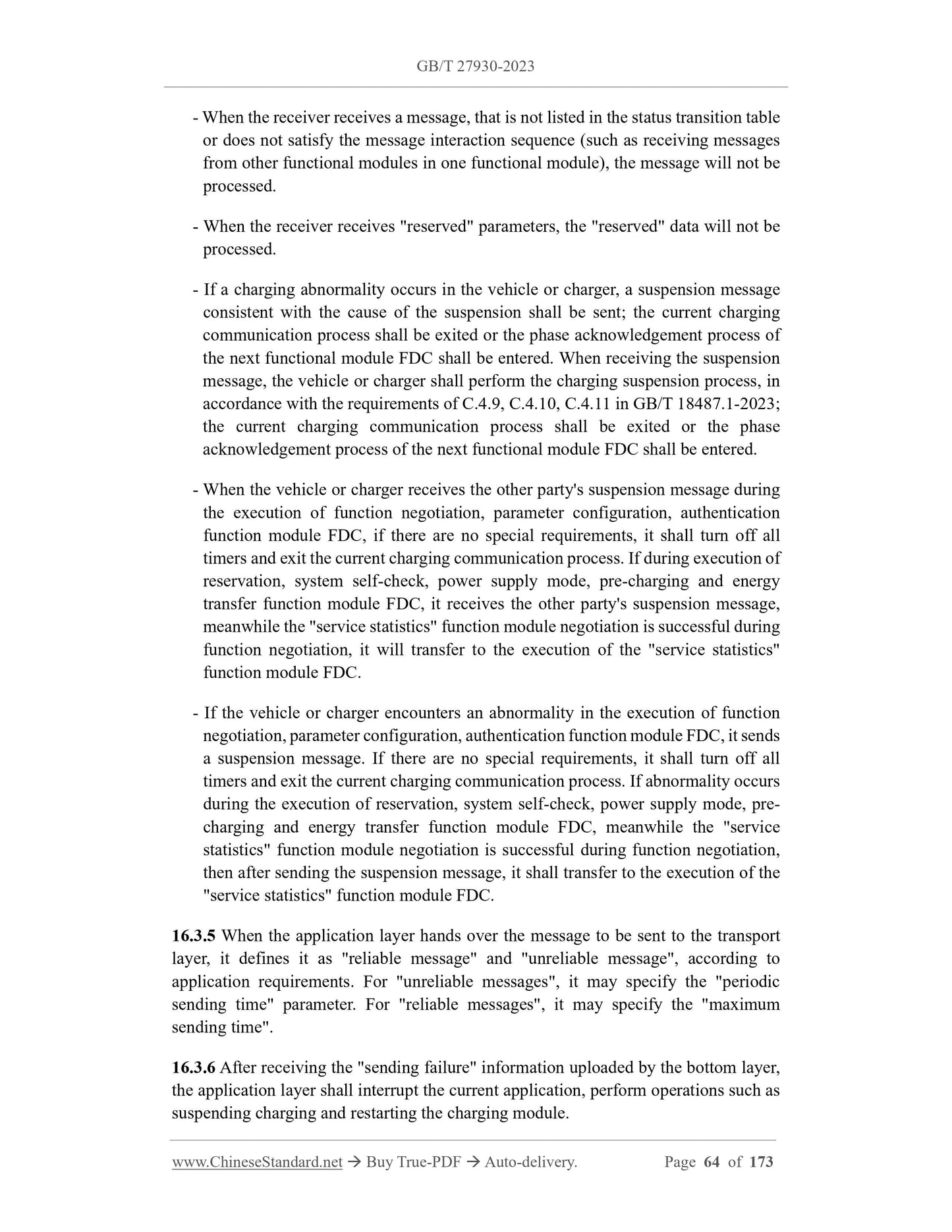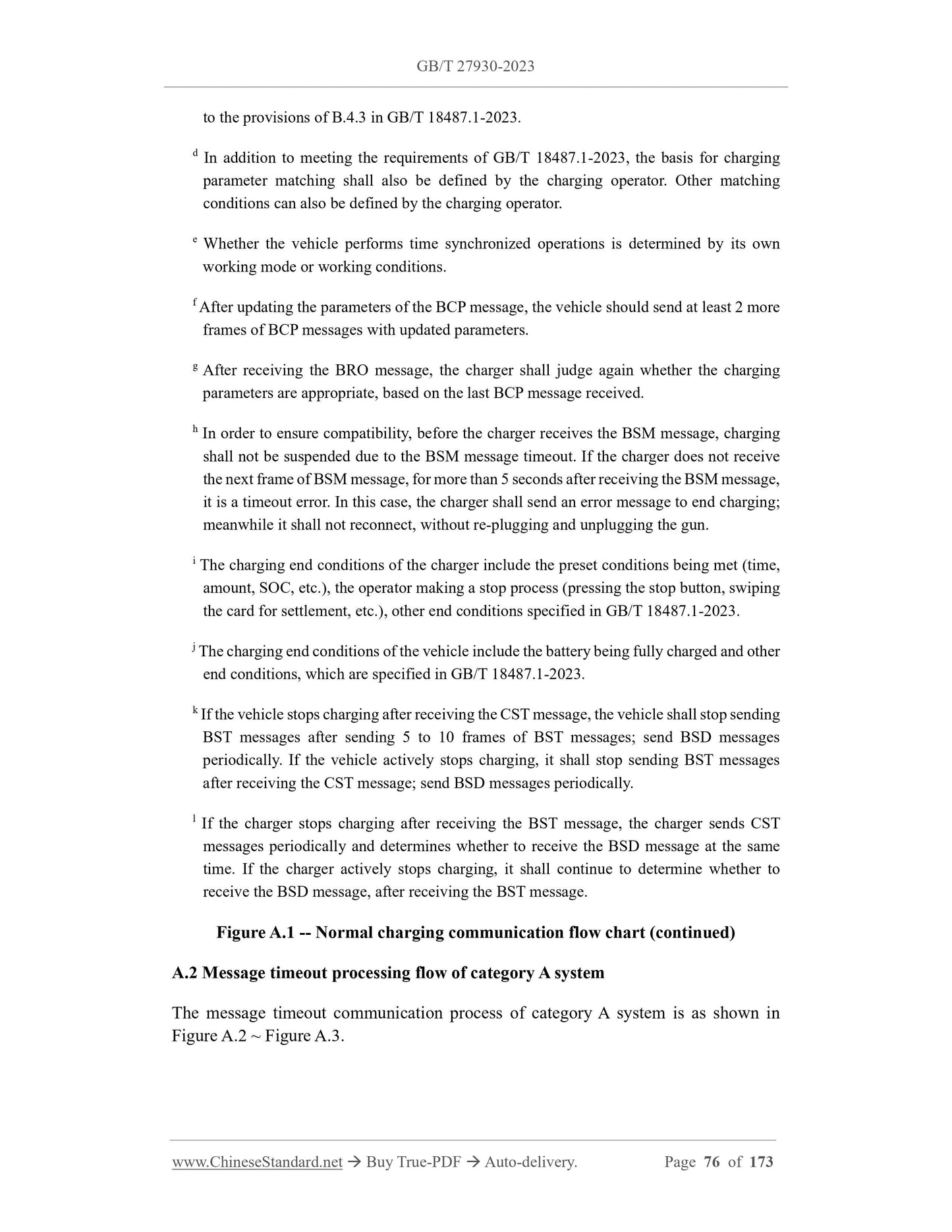1
/
of
12
www.ChineseStandard.us -- Field Test Asia Pte. Ltd.
GB/T 27930-2023 English PDF (GB/T27930-2023)
GB/T 27930-2023 English PDF (GB/T27930-2023)
Regular price
$1,805.00
Regular price
Sale price
$1,805.00
Unit price
/
per
Shipping calculated at checkout.
Couldn't load pickup availability
GB/T 27930-2023: Digital communication protocols between off-board conductive charger and electric vehicle
Delivery: 9 seconds. Download (and Email) true-PDF + Invoice.Get Quotation: Click GB/T 27930-2023 (Self-service in 1-minute)
Newer / historical versions: GB/T 27930-2023
Preview True-PDF
Scope
This document specifies the definitions and requirements of the controller area network(CAN)-based communication physical layer, data link layer, transport layer, application
layer, between the off-board conductive charger's (hereinafter referred to as "charger")
equipment communication controller (SECC) and electric vehicle communication
controller (EVCC).
This document applies to the communication -- between the charger or the charger and
discharger using charging mode 4 and the electric vehicle. It also applies to the
communication -- between the charger or charger and discharger and the electronic
control unit of the electric vehicle with charging control function. Electric vehicle
communication controllers include but are not limited to battery management systems
(BMS), as well as in-vehicle systems that need to communicate with the charger to
achieve other special functions.
Chapters 5 ~ 11 of this document apply to the charging system, which is specified in
Appendix B of GB/T 18487.1-2023 (hereinafter referred to as “category A system").
Chapters 101 ~ 106 apply to the charging system, which is specified in Appendix C of
GB/T 18487.1-2023, as well as the charging and discharging system, which is defined in
Appendix E (hereinafter referred to as "category B system").
"Vehicle" in this document specifically refers to “electric vehicle”.
Basic Data
| Standard ID | GB/T 27930-2023 (GB/T27930-2023) |
| Description (Translated English) | Digital communication protocols between off-board conductive charger and electric vehicle |
| Sector / Industry | National Standard (Recommended) |
| Classification of Chinese Standard | K81 |
| Classification of International Standard | 29.200 |
| Word Count Estimation | 130,168 |
| Date of Issue | 2023-09-07 |
| Date of Implementation | 2024-04-01 |
| Older Standard (superseded by this standard) | GB/T 27930-2015 |
| Issuing agency(ies) | State Administration for Market Regulation, China National Standardization Administration |
Share
